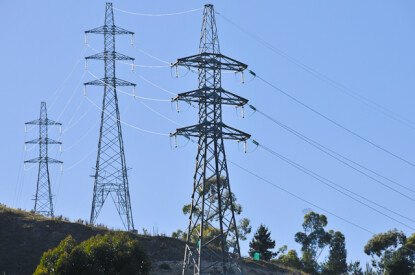Electricity forms the backbone of modern life and its reliable transmission depends significantly on the quality and performance of overhead line products used in power grids. From power generation stations to distribution substations and end consumers, overhead lines carry high voltages over long distances to ensure uninterrupted power supply. In this article, we will explore various overhead line products, latest developments and their role in bolstering grid reliability.
Transmission Conductors
Transmission conductors or overhead conductors are the primary components used in overhead power lines to carry electric current from one place to another. Different types of conductors are designed and manufactured based on the voltage levels and transmission capacities required. Aluminum conductor steel-reinforced (ACSR) and all-aluminum alloy conductor (AAAC) are the most commonly used conductor types for medium and high voltage applications.
ACSR conductors consist of several strands of aluminum wire wrapped or stranded around a steel core wire for increased strength. The steel core provides high tensile strength while aluminum coats ensure good conductivity. AAAC conductors do not have a steel core but use super durable and corrosion resistant aluminum alloy strands instead. Both conductor varieties are suitable for transmission voltages ranging from 66kV to 800kV.
Insulators and Hardware
Insulators are another vital overhead line component that helps in reliably carrying high voltages over long distances without risk of short circuits or damage. Porcelain and glass insulators that can withstand mechanical as well as electrical stresses are commonly employed. In recent years, polymer insulators made of durable silicon rubber or composite materials have also gained popularity due to their lightweight and longer service life.
Hardware fittings such as clamps, connectors, spacers and accessories are also indispensable elements that are needed to complete overhead line installations. They facilitate installation, maintenance and replacement of conductors while ensuring uninterrupted transmission under varied mechanical and weather conditions. Advances in material sciences have led to development of lighter yet strong corrosion-resistant hardware for optimized performance.
Tower Structures
Transmission towers form the backbone of overhead lines Product on which conductors and insulators are mounted and suspended. Towers come in different configurations based on transmission voltage levels, line route, terrain and number of circuits. Self-supporting and non-guyed towers are commonly used for medium voltage distribution lines and low voltage sub-transmission lines. Lattice or web-type towers are primarily adopted for high voltage extra high voltage transmission lines.
Monopole towers are gaining popularity due to advances in material properties that allow single pole structures to withstand higher mechanical loads without guy wires.pre-stressed concrete poles are widely used as well owing to benefits such as longer service life, lower maintenance needs and resistance to environmental hazards. Tower geometry, material properties and robust foundations are designed to withstand various static and dynamic loads of wind, earthquake, ice as well as live conductors during operation. (200 words)
Monitoring and Condition Assessment
Reliability of power transmission relies greatly on timely identification and resolution of faults and performance issues in overhead line assets. Modern monitoring systems and advanced fault diagnostic tools facilitate condition assessment of transmission components. Potential issues can be predicted in advance and maintenance schedules optimized to avoid unplanned outages.
Sensors attached to structures, conductors and insulators continuously monitor parameters like sag, tension, movement, electrical leakage currents and vibrations. The data analyzed using AI and IoT technologies helps detect early signs of fatigue, corrosion or component defects. Thermography, climbing inspections, acoustic noise monitoring and partial discharge measurement techniques also aid condition evaluation to plan mid-life refurbishments on critical sections. This assures long-term grid reliability and optimum use of transmission assets.
As power systems evolve to integrate renewable energy sources across wider geographic footprints, reliable transmission networks will become even more important. Advanced overhead line products, continuous monitoring systems and predictive maintenance practices are crucial to meet growing electricity demands. Ongoing research focuses on developing stronger yet lighter materials, higher efficiency conductors, and self-monitoring smart grid components. Adoption of latest products and asset management approaches will help utilities deliver affordable, sustainable and resilient power supply for the future.
*Note:
1. Source: Coherent Market Insights, Public sources, Desk research
2. We have leveraged AI tools to mine information and compile it



